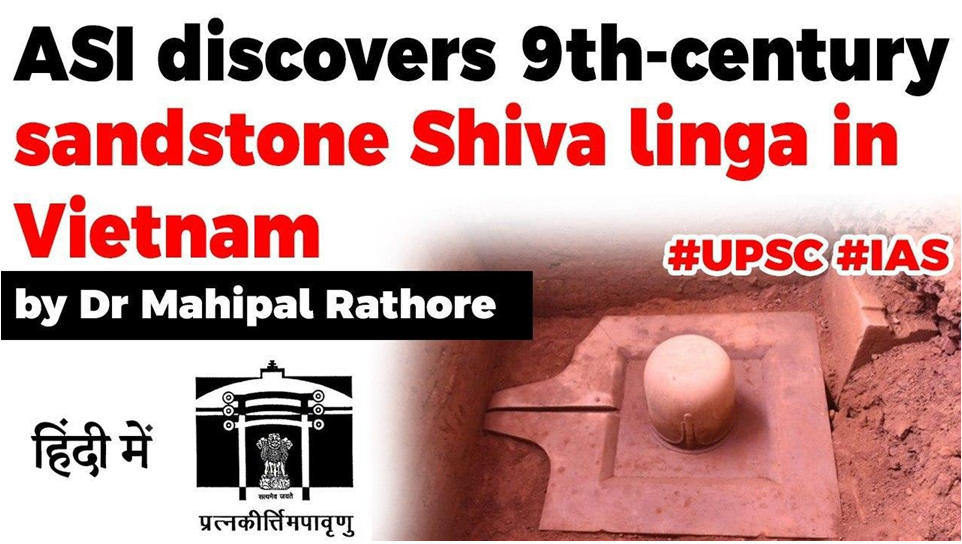Table of Contents
The Discovery
- The Archaeological Survey of India (ASI), during their restoration work at Cham Temple Complex, My Son Sanctuary, Vietnam, discovered monolithic sandstone Shiva Lingam.
- It is an 1100-year-old structure with exquisite detailing and patterns that exhibits cultural values





Champa Kingdoms
- A powerful Indianised culture that flourished in South-Central Vietnam from the 4th to 13th centuries
- Hinduism shaped the art and culture of the Champa kingdom for centuries, as testified by the many Cham Hindu statues and red brick temples that dotted the landscape in Cham lands.

The My Son (Mi-sun) temples
- My Son was once the most important intellectual and religious centre of the kingdom of Champa and may also have served as a burial place for Cham monarchs.
- French experts discovered the temple complex in a dilapidated condition in 1903-04.
- During excavations at that time, French archaeologists described the presence of a Shiva Lingam in the group of temples that is currently being renovated.
- My Son became a religious centre under King Bhadravarman in the late 4th century and was continuously occupied until the 13th century – the longest period of development of any monument in Southeast Asia.
- The Cham Temple complex is a part of the UNESCO world heritage site and was built in 9th century AD during the rule of King Indravarman II
- Most of the temples were dedicated to Cham kings associated with divinities, particularly Shiva, who was regarded as the founder and protector of Champa’s dynasties.
- Cham society also most likely practiced Shaivite Hinduism.
- Before this, six other Shiva Lingams were found in the My Son temple complex.
- But the latest find is believed to be the most magnificent

A thriving Kingdom
- The Cham had a vast trade network, with routes extending northeast to China, Taiwan, and Japan and south to Malaysia and Indonesia.
- During one period in their history, the summits of some of the towers were completely covered with a layer of gold.
- 14th -15th centuries – Wars with the Dai Viet
- After the area fell into decline, many of the temples were stripped of their glory.
Destruction
- The French moved some of the remaining sculptures and artefacts to the Museum of Cham Sculpture in Danang
- The Viet Cong used My Son as a base during the Vietnam war and American bombing destroyed many of the most important monuments.
- The temples are in poor shape – only about 20 structures survive where at least 68 once stood
- Today it is a Unesco World Heritage site.

ASI’s involvement
- India, having a deep cultural relationship with Vietnam, had extended their helping hands in the restoration of these historic monuments.
- A four-member ASI team is currently engaged in the fourth season of restoration and conservation work at My Son.
- Over the past three seasons, ASI has restored temples in two different groups at the complex, and the team is now working on the third group of temples.
Development Partnership Division of MEA
- The external affairs ministry created a new Development Partnership Division in January to coordinate and undertake culture and heritage conservation projects abroad, including identification, planning, and implementation of schemes in consultation with technical agencies.
- The new division will also act as a repository of all such projects being undertaken by India abroad, and be instrumental in the dissemination of information of projects and cooperation in culture and heritage.
Latest Burning Issues | Free PDF






















 WhatsApp
WhatsApp